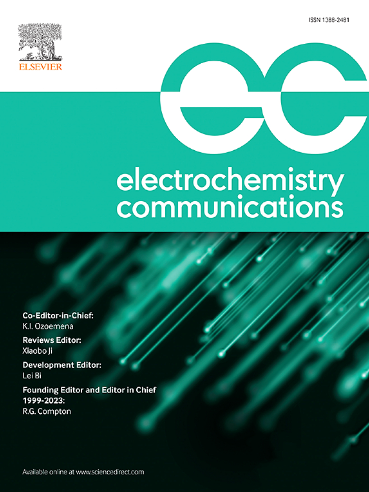Investigation of local corrosion behavior and mechanism for TA2/HAl77-2/316L SS coupling systems under seawater liquid film
IF 4.7
3区 工程技术
Q2 ELECTROCHEMISTRY
引用次数: 0
Abstract
The behavior and mechanism of local corrosion for a TA2/HAl77-2/316L SS coupling system was investigated under a seawater liquid film using coupled multielectrode arrays (CMEAs) and Electrochemical Impedance Spectroscopy (EIS) technology. Local corrosion parameters, such as the maximum potential difference (ΔEmax), the maximum anode current density (Ia,max), the local corrosion intensity factor (LCII), and the cathode to anode area ratio (Sc/Sa) were obtained to quantitatively characterize the local corrosion degree of microarray electrodes. The results showed that HAl77-2 and most of the 316L SS electrode wires in the microarray electrodes served as anodes, while TA2 and the remainder of the 316L SS electrode wires performed as cathodes. When the concentration of Cl− increased from 1.9 to 4.3 wt%, the anode potential shifted negatively and the anode current tended to increase. Under a seawater liquid film with a thickness of 200 μm and Cl− concentrations of 3.1 and 4.3 wt%, the anodic galvanic current and corrosion driving force of CMEA were relatively high. Under a seawater liquid film with a thickness of 200 μm, the anodic galvanic current, ΔEmax, Ia,max, and LCII all reached their maximum values at 60 °C. The electrochemical impedance modulus of HAl77-2 under coupled polarization conditions was smaller than that of HAl77-2 under uncoupled conditions, indicating that the polarization effect between the electrodes in the coupled state promoted the corrosion kinetics of HAl77-2.
求助全文
约1分钟内获得全文
求助全文
来源期刊

Electrochemistry Communications
工程技术-电化学
CiteScore
8.50
自引率
3.70%
发文量
160
审稿时长
1.2 months
期刊介绍:
Electrochemistry Communications is an open access journal providing fast dissemination of short communications, full communications and mini reviews covering the whole field of electrochemistry which merit urgent publication. Short communications are limited to a maximum of 20,000 characters (including spaces) while full communications and mini reviews are limited to 25,000 characters (including spaces). Supplementary information is permitted for full communications and mini reviews but not for short communications. We aim to be the fastest journal in electrochemistry for these types of papers.
 求助内容:
求助内容: 应助结果提醒方式:
应助结果提醒方式:


